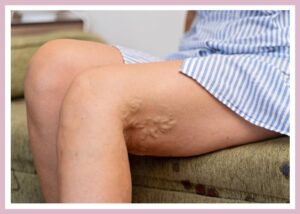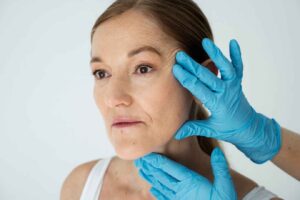What You Need to Know About PRP Hair Treatment Before Visiting a Hair Clinic

Hair loss can be a distressing experience for many, impacting self-esteem and overall confidence. Among the various treatment options available today, Platelet-Rich Plasma (PRP) therapy has gained significant attention for its potential to promote hair growth and improve hair density. Before you visit a Sydney hair clinic for PRP treatment, it’s essential to understand what the procedure entails, its benefits, potential risks, and what you can expect.
What is PRP Hair Treatment?
Platelet-Rich Plasma (PRP) therapy is a non-surgical treatment that uses your blood’s plasma, which is rich in growth factors, to stimulate hair growth. The process involves drawing a small amount of your blood, processing it to concentrate the platelets, and then injecting the platelet-rich plasma directly into the scalp where hair thinning or loss is occurring.
How Does PRP Work?
PRP therapy works on the principle that platelets, a component of blood, contain growth factors that can aid in tissue repair and regeneration. When injected into the scalp, these growth factors can potentially stimulate the hair follicles, encouraging new hair growth and improving the thickness and health of existing hair.
Benefits of PRP Hair Treatment
Natural Solution
Since PRP uses your blood, there is a lower risk of allergic reactions or adverse effects compared to other treatments. This is because you are not introducing foreign substances into your body. However, there can still be rare allergic reactions to the materials used during PRP preparation, such as anticoagulants or preservatives.
Minimally Invasive
PRP therapy is a non-surgical procedure, making it less invasive than hair transplant surgeries. Additionally, because it uses your own blood cells, PRP therapy avoids the risks associated with general anaesthesia and foreign body rejection.
Improved Hair Density
Many patients report increased hair density and a reduction in hair shedding after undergoing PRP therapy. This positive effect is likely due to the growth factors in the platelets stimulating hair follicles and extending their growth phase. However, it’s important to remember that PRP is not a one-time fix, and multiple sessions are often recommended for optimal results.
Quick Recovery Time
The procedure typically has minimal downtime, allowing patients to resume their daily activities shortly after treatment. This makes it a popular choice for busy individuals who can’t afford to be sidelined for an extended period of recovery. Additionally, minimal downtime often translates to lower overall treatment costs, as there’s less need for extended hospital stays or in-home care.
What to Expect During PRP Treatment
Consultation
Your journey will start with a consultation at the hair clinic, where the specialist will assess your hair loss condition and determine if PRP therapy is suitable for you. They will discuss your medical history, examine your scalp, and answer any questions you may have about the procedure and its potential outcomes. This will help you make an informed decision about whether PRP therapy is the right course of action for your hair loss goals.
Blood Draw
A small amount of blood will be drawn from your arm, similar to a routine blood test. The technician will use a thin needle to minimise discomfort, and the entire process is usually quite quick. Afterwards, you may be asked to apply pressure to the area for a few minutes to stop any bleeding.
Processing
The blood is placed in a centrifuge to separate the platelet-rich plasma from the other components. This process, called differential centrifugation, relies on varying densities of blood components. During centrifugation, red blood cells, the heaviest element, settle at the bottom, while platelets accumulate in a specific layer due to their intermediate density.
Injection
The concentrated plasma is injected into the targeted areas of the scalp using fine needles. This part of the procedure may cause some discomfort, but it is usually well-tolerated. A topical anaesthetic can be applied beforehand to minimise any stinging or prickling sensation. Additionally, the needles used are very thin, which helps to reduce discomfort during injection.
Post-Treatment Care
You may experience mild swelling, redness, or soreness in the treated areas, but these side effects typically subside within a few days. If you experience any of these side effects, applying a cool compress to the area may help reduce discomfort. For any worsening pain, redness, or swelling, consult your healthcare provider.
Potential Risks and Side Effects
While PRP therapy is generally considered safe, there are some potential risks and side effects to be aware of:
Infection
As with any injection procedure, there is a small risk of infection at the injection sites. To minimise this risk, healthcare providers follow strict aseptic technique, which involves thorough sterilisation of the area and equipment. Following any aftercare instructions, such as keeping the area clean and dry, can further reduce the chance of infection.
Pain or Discomfort
Some patients may experience pain or discomfort during and after the injections. This is usually mild and temporary, often described as a prick or stinging sensation during injection, and soreness or tenderness at the injection site afterwards. To minimise discomfort, certain numbing creams can be applied beforehand, and applying a cool compress after the injection can also help soothe the area.
Swelling and Redness
Temporary swelling and redness can occur but usually resolve within a few days. This is a common sign of inflammation, triggered by the body’s attempt to heal itself. If the swelling or redness worsens, becomes persistent, or is accompanied by other concerning symptoms, it’s best to consult a doctor for diagnosis and treatment.
Who is a Good Candidate for PRP Hair Treatment?
PRP therapy can be an effective option for individuals experiencing early stages of hair loss or those with thinning hair. However, it may not be suitable for everyone. Ideal candidates are generally in good health and have realistic expectations about the results. Individuals with certain medical conditions, such as blood disorders or active infections, may not be suitable for PRP treatment.
Conclusion
PRP hair treatment offers a promising solution for individuals seeking to combat hair loss and improve hair density without undergoing surgery. By understanding the process, benefits, and potential risks associated with PRP therapy, you can make an informed decision about whether this treatment is right for you. Before proceeding, it’s crucial to consult with a qualified hair specialist who can provide personalised advice and guide you through the process.
If you’re considering PRP hair treatment, schedule a consultation with a reputable hair clinic to discuss your options and take the first step towards achieving fuller, healthier hair.v






